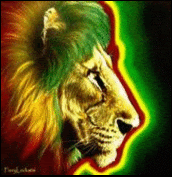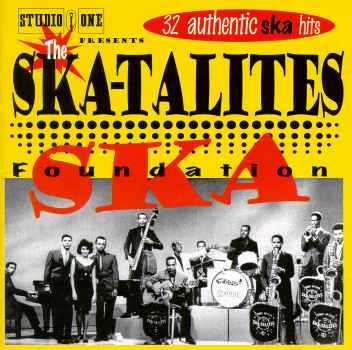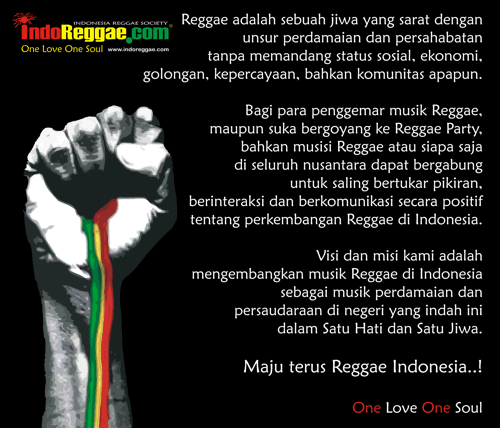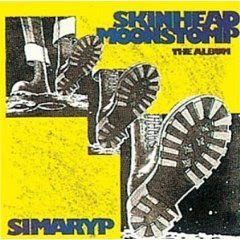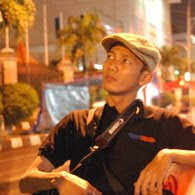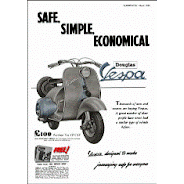
-------------------------------------------------------------------------------------------------
 London's Club Ska is reporting that at 8 am this morning Laurel Aitken, widely acknowledged as the 'Godfather of Ska' and affectionately known as 'Boss Skinhead,' died of a heart attack at Glenfield Hospital in Leicester, England. Aitken was born in Cuba on April 22, 1927 and moved to his father's homeland of Jamaica in 1938. In 1957 he began his recording career with the single "Roll Jordan Roll." The double A-side "Little Sheila" / "Boogie in my Bones" was the first single released on Chris Blackwell's Island Records, one of the first ever ska records, and the first Jamaican recording ever released in England. Aitken relocated to the U.K. and recorded numerous hits throughout the 60s. He was later acknowledged as "an elder statesman to the Two Tone ska revival movement of the punk era" (AllMusic).
London's Club Ska is reporting that at 8 am this morning Laurel Aitken, widely acknowledged as the 'Godfather of Ska' and affectionately known as 'Boss Skinhead,' died of a heart attack at Glenfield Hospital in Leicester, England. Aitken was born in Cuba on April 22, 1927 and moved to his father's homeland of Jamaica in 1938. In 1957 he began his recording career with the single "Roll Jordan Roll." The double A-side "Little Sheila" / "Boogie in my Bones" was the first single released on Chris Blackwell's Island Records, one of the first ever ska records, and the first Jamaican recording ever released in England. Aitken relocated to the U.K. and recorded numerous hits throughout the 60s. He was later acknowledged as "an elder statesman to the Two Tone ska revival movement of the punk era" (AllMusic).The 2-Tone era saw Aitken performing with the English Beat, touring with mod band Secret Affair, and backed by punk/reggae act the Ruts. In the 80s Aitken regularly toured the U.K. and recorded with British act Potato 5. In 1986 appeared in mod film Absolute Beginners alongside David Bowie. Throughout the late 90s he performed with several third-wave ska acts, including the Toasters and the New York Ska Jazz Ensemble. Most recently, 2002 saw the release of Live at Club Ska.
Our deepest condolences go out to the Laurel's family, friends and fans.
Labels: History, Laurel Aitken, Music, Reggae, SKA
Tracklisting :
- CozyRepublic-Bidadari
- CozyRepublic-BisaSetia
- CozyRepublic-CintakuMasihDiHatimu
- CozyRepublic-HitamPutih
- CozyRepublic-JanganMalu-Malu
- CozyRepublic-KauMiripPacarku
- CozyRepublic-KucingRasta
- CozyRepublik-aku masih punya cinta
- CozyRepublic-RepublikUye
- CozyRepublic-RepublikUyeKejawenVersion
Download Album
Labels: Cozy Republik, Download, Music, Reggae
Tracklisting:
- Jung Fan Gung Foo_Apalagi
- Jung Fan Gung Foo_Bocah Pantai
- Jung fan Gung Foo_Bruce Lee
- Jung Fan Gung Foo_Semua Berantakan
- Jung Fan Gung Foo_Senyum itu
- Jung Fan Gung Foo_Silly Dumb Head
- Jung Fan Gung Foo_Skuter Lambretta
- Jung Fan Gung Foo_Sudah Bosan
- Jung Fan Gung Foo_The Famous One
- Jung Fan Gung Foo_ Pesta
- Jung Fan Gung Foo_2 menit 10 detik
- Jun Fan Gung Foo - Astaga
- Jun Fan Gung Foo - Dilema problema
- Jun Fan Gung Foo - Hei Segalanya Kan Terjadi
Labels: Download, Jun Fan Gung Foo, Music, SKA

Download Album
- lynn tait & the jets - soul food
- alton ellis - my time is the right time
- clancy's all stars - c.n. express
- carlton alphonso - where in this world
- earl st. joseph - eastern promise
- the groovers - you were meant for me
- clancy eccles - what will your mama say
- tommy mckenzie - fiddlesticks
- monty morris - say what your saying
- clancy eccles - the fight
- ernest ranglin - heart beat
- alton ellis - the message
- the joyce bond show - they wash
- lloyd terrel - bang bang lulu
Download Album
Rocksteady merupakan salah satu genre musik yang berasal dari Jamaika. Jenis musik ini berawal dari ska yang dibikin lebih halus tapi tidak seperti reggae yang pelan dan santai. Reggae adalah penerus jenis musik rocksteady ini.
Nama rocksteady ini muncul dari lagi Alton Ellis "Rock Steady". Genre musik ini muncul ketika warga-warga desa di Jamaika berhijrah dari daerah pedesaan dan masuk ke kota-kota. Di ghettoKingston, para pemuda menyanyikan lagu-lagu dengan irama rocksteady. di kota-kota seperti misalkan
----------------------------------------------------------------------------------------------------------------------------Rocksteady is a music genre that was most popular in Jamaica, starting around 1966, and its reggae successor was established around 1968.[1]
The term rocksteady comes from a dance style that was mentioned in the Alton Ellis song "Rock Steady". A successor to Jamaican ska, and a precursor to reggae, rocksteady was performed by Jamaican vocal harmony groups such as The Gaylads, The Kingstonians, The Maytals and The Paragons. Dances performed to rocksteady were less energetic than the earlier ska dance moves. Rocksteady differs from ska musically as the tempo is slower and more relaxed. The bass is heavier and more prominent in the mix and in addition, the bass lines abandon the earlier "walking" style of the ska period in favor of more broken, syncopated figures. The ska-style back beat and the emphasis on the offbeat carried over into rocksteady.
the Skatalites - 32 Authentic Ska Hits
0 comments Posted by Henry Lutfidwianto Susilotomo at 3:10 AM- the skatalites - big trombone
- the skatalites - blow roland blow
- the skatalites - Can't You See
- the skatalites - carry go bring come
- the skatalites - Exodus
- the skatalites - shame & scandal
- the skatalites - simmer down (featuring bob marley)
- the skatalites - ska ska ska
- the skatalites - Split Personality
- the skatalites - The Vow
- the skatalites - Welcome Back Home
- the skatalites - Woman A Come
- the skatalites - World's Fair
- the skatalites - you're wondering now
Biography of The Skatalites ..
In Jamaica in the mid-50's, a fledgling recording industry saw the birth of what became known as Ska. Created by fusing Boogie-Woogie Blues, R+B, Jazz, Mento, Calypso and African rythyms, Ska became the first truly Jamaican music and by the 60's all the vocalist were swarming to the studios to record their songs to this infectious new beat. Bob Marley, Peter Tosh, Toots and the Maytals, Jimmy Cliff, Alton Ellis, Ken Boothe are just a few of the names who came to record this new music, which coincided with the whole island's excitement about Jamaica's independence in 1962. The core musicians playing on most of these sessions saw the opportunity to play this music live to the public.Tommy McCook, Rolando Alphonso, Johnny Moore, Lester Sterling, Don Drummond, Lloyd Knibb, Lloyd Brevett, Jerry Haynes, and Jackie Mittoo began working together in 1963 and formed The Ska-talites in May 1964.
Spring 1964
The Skatalites record their first LP at Studio One in Kingston, Ska Authentic, and tour the island as the creators of Ska. Their recordings for various producers rule the airwaves, stations JBC and RJR, that is. Foremost among their producers were; Clement 'Sir Coxsone' Dodd, Arthur 'Duke' Reid, Cecil 'Prince Buster' Campbell, Vincent 'King' Edwards, Justin 'Phillip' Yap, Leslie Kong, Lindon Pottinger,Sonya Pottinger and Vincent 'Randy' Chin. The Skatalites led sessions with all the top artists and helped to break young talents such as Delroy Wilson, Desmond Dekker, The Wailers, Lee Perry, etc.

Fall 1964
Don Drummond's composition, "Man In The Street", enters the Top 10 in the UK. Trombonist Drummond is not only the Skatalites busiest composer, but the most prolific in all of Ska, with at least 200 tunes to his name by 1965.
January 1st 1965
Don Drummond is jailed for the murder of his girlfriend, Anita 'Marguerita' Mahfood. He is later convicted and remanded to the Bellevue Asylum.
August, 1965
The Skatalites play their last show. The break-up results in the formation of two supergroups, Rolando Alphonso and the Soul Vendors and Tommy McCook and the Supersonics.
Early 1967
Don Drummond's Ska-adaption of the theme to the film "The Guns Of Navarone" enters the UK Top 10.
May 6, 1969
Don Drummond dies at age 37 in the Bellevue Asylum.
June 1983
The Skatalites reform for a reunion performance at the Sunsplash festival in Montego Bay in July. Their show was a smashing success and the band played more concerts in Jamaica while weighing offers to tour abroad.
April 1984
The Skatalites record their reunion album, The Return of The Big Guns,released on Mango Records in the U.K.
July 7th 1984
The Skatalites play to thousands at Selhurst Park during the London Sunsplash. The Skatalites play 7 tunes and also back Prince Buster on three before closing with a reprise of their theme song, "Freedom Sounds".
1985-88
The core members of the Skatalites emigrate and eventually coalesce in the northeast of the United States. They play their first US concert at The Village Gate and begin to play spotted dates in Northeast US.
April 1989
The Skatalites are support act for Bunny Wailer's Liberation Tour featuring 7 original members: Tommy McCook,Roland Alphonso,Lester Sterling,Johnny Moore, Jackie Mittoo,Lloyd Brevett,Lloyd Knibb with special guests Dion Knibb on vocals, Devon James on guitar,and Ken Stewart on keyboards.
January 1990
The Skatalites do their first headline tour of the US with the same lineup minus Jackie Mittoo and Lester Sterling.
December 16, 1990
Jackie Mittoo dies in Toronto Canada from cancer.
1991-93
The Skatalites continue touring the US and in 1992 do their first tour of Europe. They continue working towards the release of a new album.
1993
Skavoovee is released in the US on Shanachie Records and in Japan as McCooke's Book(sic). The Skavoovee tour featuring the Skatalites, Special Beat, Selector, and The Toasters tours the US
January 1996
The Skatalites are nominated for a Grammy Award in the category of Best Reggae Album for their 1995 Shanachie release, Hi Bop Ska.
January 1997
The Skatalites are nominated for a Grammy Award in the category of Best Reggae Album for their 1996 Shanachie release, Greetings From Skamania.
1997
The Skatalites release "Ball of Fire" on Island Records with special guest Ernest Ranglin on guitar
May 5, 1998
Tommy McCook passes away near his home in Lithonia Georgia.
November 17, 1998
Rolando Alphonso passes away at Cedars Sinai Medical Center in Los Angeles CA.
March 27, 1999
Cedric 'Im Brooks joins The Skatalites, shouldering the legacy of Tommy McCook and Rolando Alphonso.
May 2000
The Skatalites record a new album at The Hit Factory in Miami with 15 original tracks with special guest Ken Boothe on a vocal track.
December 26 and 27 2001
The Skatalites record another new album in Paris at Davout Studios for Melodie Records and released as "From Paris With Love" on April 15,2002.
February 2002
The Skatalites begin their World Tour for the year touching USA, Europe, Mexico, Venezuela, Puerto Rico, Russia and Japan which lasted 9 months.
April 2003
The Skatalites return to the studio with Toots(and The Maytalls) Hibbert to record a contribution to his new True Love cd featuring many special guests including Willie Nelson,Bonnie Raitt,Eric Clapton et al. This album subsequently won the Grammy for 2004.
March 2004
The Skatalites announce the beginning of their 40th Anniversary tour including Colombia,Greece and Singapore,in addition to the usual global stops. This celebratory tour will last until May 2005. The addition of Vincent(Don Drummond Jr)Gordon and Karl(Cannonball) Bryan makes this one of the best Skatalites lineups ever.
April 2005
The Skatalites embark on a new World Tour this year with their new bass player Val Douglas. Mr Douglas is another outstanding Jamaican musician who has played on numerous sessions and his famous A-Team band was the primary backing band for Reggae Sunsplash Tours all through the 80's and 90's. The Skatalites continue to be composed of the top musicians in their genre,as they have from the beginning.
October 2005
The Skatalites release "The Skatalites in Orbit,Vol.1 recorded live in Buenos Aires,Argentina with many thanks to Javier DaRocha and Pedro Pearson for the best live Skatalites recording ever.
March 2006
The Skatalites play at La Bal De La Rose for Princess Caroline of Monaco along with Jimmy Cliff,The Wailers and Alpha Blondy. This show starts the 2006 Global Orbit Tour reaching as far as Australia,New Zealand,Chile,Argentina
etc.
April 2006
Skatalites record 11 brand new tunes and 1 cover in Byron Bay,Australia at the 301 Studios. The new release "On The Right Track" is forthcoming.
On The Right Track is released worldwide by AIM International from Australia.
September 2007
The Skatalites contribute the track "Be My Guest" with Ben Harper on vocals for the new Fats Domino tribute cd "Going Home" featuring numerous artists. This cd is a fund raiser for all musicians affected by Hurricane Katrina.
Labels: Music
Kalimat tersebut boleh jadi dicantumkan untuk memancing pembeli. Ya, produser album ini memang perlu mengeluarkan banyak pancingan. Selain karena band pendukungnya tidak terlalu familiar di telinga pecinta musik awam, tapi juga karena musik yang diusungnya tak lagi hype
Selain itu, album ini diproduksi secara independent. Jika tak bisa keluar uang banyak untuk biaya promosi, sentuhan-sentuhan 'dagang' rasanya lumrah dilakukan baik di kaset maupun cover kaset.
Seperti judulnya, 'Rise Up: 3-Nation Compilation' adalah album kompilasi grup musik dari tiga negara. Indonesia, Belanda dan Swiss. Aliran yang diusung adalah ska.
Namun jangan dulu membayangkan ska ala Tipe-X atau Jun Fan Gang Foo yang identik dengan lagu-lagu bernuansa ceria dengan iringan terompet.
Dalam 'Rise Up: 3-Nation Compilation', terompet masih tetap ada, tapi tidak dominan. Tempo lagu-lagunya juga relatif tidak begitu cepat. Tak perlu takut kehabisan nafas jika mau ikut berdendang bersama.
Kembali ke soal kalimat yang ditulis di awal, If it's too loud, you're too old, saya berani mengatakan album ini sama sekali tidak keras. Saya juga berani jamin kalau saya belum tua.
Tracklisting:
seperti beberapa tahun silam.
- Sub Kultur - Semerbak
- Agent Skins - Wave Vibration
- Noin Bullet - Pagi Hari
- Dirty Dolls - Make Up Your Mind
- Apollo 10 - Nostalgila
- The Palookas - Smile
- Open Season - Keep My Fire Burning
- Plenty Enuff - Catching in the Rye
- Open Season - Take a Lady
- Plenty Enuff - Dass Es Mehr Gibt
- The Palookas - Baby
- Apollo 10 - Imagination
- Dirty Dolls - Sunset di Mataku
- Noin Bullet - Sambutlah
- Sub Kultur - There is No
- Agent Skins - The Will to Live.
Labels: Music

Ska (pronounced /ˈskɑː/, Jamaican [skja]) is a music genre that originated in Jamaica in the late 1950s, and was the precursor to rocksteady and reggae.[1] Ska combined elements of Caribbean mento and calypso with American jazz and rhythm and blues. It is characterized by a walking bass line accented with rhythms on the offbeat.
In the early 1960s, ska was the dominant music genre of Jamaica and was popular with British mods. Later it became popular with many skinheads.[2][3][4][5] Music historians typically divide the history of ska into three periods: the original Jamaican scene of the 1960s (First Wave), the English 2 Tone ska revival of the late 1970s (Second Wave) and the third wave ska movement, which started in the 1980s (Third Wave).
Etymology
There are different theories about the origins of the word ska. Ernest Ranglin claimed that the term was coined by musicians to refer to the "skat! skat! skat!" scratching guitar strum.[6] Another explanation is that at a recording session in 1959 produced by Coxsone Dodd, double bassist Cluett Johnson instructed guitarist Ranglin to "play like ska, ska, ska", although Ranglin has denied this, stating "Clue couldn't tell me what to play!".[7] A further theory is that it derives from Johnson's word skavoovie, with which he was known to greet his friends.[8] Jackie Mittoo insisted that the musicians themselves called the rhythm Staya Staya, and that it was Byron Lee who introduced the term 'ska'.[9]
History
After World War II, Jamaicans purchased radios in increasing numbers and were able to hear rhythm and blues music from Southern United States cities such as New Orleans by artists such as Fats Domino and Louis Jordan. The stationing of American military forces during and after the war meant that Jamaicans could listen to military broadcasts of American music and there was a constant influx of records from the US. To meet the demand for that music, entrepreneurs such as Prince Buster, Clement "Coxsone" Dodd, and Duke Reid formed sound systems. As jump blues and more traditional R&B began to ebb in popularity in the early 1960s, Jamaican artists began recording their own version of the genres.[10] The style was of bars made up of four triplets, similar to that of "My baby just cares for me" by Nina Simone, but was characterized by a guitar chop on the off beat - known as an upstroke or skank - with horns taking the lead and often following the off beat skank and piano emphasizing the bass line and, again, playing the skank.[1] Drums kept 4/4 time and the bass drum was accented on the 3rd beat of each 4-triplet phrase. The snare would play side stick and accent the 3rd beat of each 4-triplet phrase. [1] The upstroke sound can also be found in other Caribbean forms of music, such as mento and calypso.[11]
One theory about the origin of ska is that Prince Buster created it during the inaugural recording session for his new record label Wild Bells.[11] The session was financed by Duke Reid, who was supposed to get half of the songs to release. However, he only received one, which was by trombonist Rico Rodriguez.[citation needed] Among the pieces recorded were "They Got to Go", "Oh Carolina" and "Shake a Leg."[citation needed] According to reggae historian Steve Barrow, during the sessions, Prince Buster told guitarist Jah Jerry to "change gear, man, change gear."[citation needed] The guitar began emphasizing the second and fourth beats in the bar, giving rise to the new sound. The drums were taken from traditional Jamaican drumming and marching styles. To create the ska beat, Prince Buster essentially flipped the R&B shuffle beat, stressing the offbeats with the help of the guitar.
The first ska recordings were created at facilities such as Studio One and WIRL Records in Kingston, Jamaica with producers such as Dodd, Reid, Prince Buster, and Edward Seaga.[11] The ska sound coincided with the celebratory feelings surrounding Jamaica's independence from the UK in 1962; an event commemorated by songs such as Derrick Morgan's "Forward March" and The Skatalites' "Freedom Sound." Because the newly-independent Jamaica didn't ratify the Berne Convention for the Protection of Literary and Artistic Works until 1994 copyright was not an issue, which created a large number of cover songs and reinterpretations. Jamaican musicians such as The Skatalites often recorded instrumental ska versions of popular American and British music, such as Beatles songs, Motown and Atlantic soul hits, movie theme songs, or surf rock instrumentals. Bob Marley's band The Wailers covered the Beatles' "And I Love Her," and radically reinterpreted Bob Dylan's "Like a Rolling Stone."
Byron Lee & the Dragonaires performed ska with Prince Buster, Eric "Monty" Morris, and Jimmy Cliff at the 1964 New York World's Fair. As music changed in the United States, so did ska. In 1965 and 1966, when American soul became slower and smoother, ska changed its sound accordingly and evolved into rocksteady.[12][11]
2 Tone
Main article: 2 Tone
The 2 Tone genre, which began in the late 1970s in the areas around Birmingham and Coventry in England, was a fusion of Jamaican ska rhythms and melodies with punk rock's more aggressive guitar chords and lyrics.[12] Compared to 1960s ska, 2 Tone music had faster tempos, fuller instrumentation and a harder edge. The genre was named after 2 Tone Records, a record label founded by Jerry Dammers of The Specials. Although 2 Tone bands were respectful to the original Jamaican ska artists, The Specials failed to credit musicians such as Prince Buster, as the composer of music on their 1979 debut vinyl release. However, in many cases, the reworking of classic ska songs turned the originals into hits again in the United Kingdom. The 2 Tone movement promoted racial unity at a time when racial tensions were high in the UK. Riots in British cities were a feature during the summer that The Specials song "Ghost Town" was a hit, although this work was in a slower, Reggae beat. Most of the 2 Tone bands had multiracial lineups, such as The Beat (known as English Beat in North America) and The Selecter.[1] Although only on the 2 Tone label for one single, Madness were one of the most effective bands at bringing the 2 Tone genre into the mainstream.
Third wave
See also: Ska punk
In the 1980s, bands influenced by the 2 Tone ska revival started forming in the United States and other countries.[12] The style was characterized by brass instruments, a heavily-accented offbeat, and usually a much faster, punk-inspired, tempo.[12] The first well-known American ska revival band was The Toasters, who played in a 2 Tone-influenced style and paved the way for the third wave ska movement. Other notable early third wave ska bands included The Donkey Show, The Uptones, Fishbone, Operation Ivy, Let's Go Bowling and Bim Skala Bim.
Most third wave bands emerged from Southern California, but by the early 1990s, ska revival bands were forming throughout the United States and many other countries. Tazy Phyllipz and Albino Brown of the Ska Parade radio show popularized the label "third wave ska." Ska Parade helped promote many Southern California bands such as Sublime, No Doubt, and Let's Go Bowling.[13]
In 1993 The ska-core band Mighty Mighty Bosstones signed with Mercury Records and appeared in the film Clueless, with their first mainstream hit "Where'd You Go?" Bands such as No Doubt, Reel Big Fish, Less Than Jake and Goldfinger brought ska mainstream attention. During this time, many ska songs became hits on mainstream radio, including "Spiderwebs", "Sell Out", and "The Impression That I Get."
Many third wave ska bands played ska punk and its subgenre, ska-core. Ska punk took 2 Tone and increased the punk rock elements, while ska-core blended ska with hardcore punk. However, some third wave ska bands — such as The Allstonians, Skavoovie and the Epitones, Hepcat and The Slackers — continued to play in a more traditional 1960s-influenced style. Many of the popular accouterments of the 2 Tone and mod movements were also popular with the third wave of ska. The checkerboard pattern of the 2 Tone record label became a popular stylistic element on third wave ska clothing, album covers, and posters. By the late 1990s, mainstream interest in third wave ska bands waned as other music genres gained momentum.[citation needed]
Record labels
In 1981, The Toasters' frontman Robert "Bucket" Hingley created Moon Ska Records, which became the biggest American ska record label. It featured many bands that became staples in third wave ska.[citation needed] Moon Ska Records officially folded in 2000, but Moon Ska Europe continued operating in the 2000s, and later relaunched as Moon Ska World. In 2003, Hingley launched a new ska record label, Megalith Records. In 1996, Mike Park of the band Skankin' Pickle officially founded Asian Man Records, which was the biggest West coast United States third wave ska label.[citation needed] In 1997, Brett Gurewitz and Tim Armstrong founded Hellcat Records, which mostly featured punk rock bands, but also featured several ska and ska punk acts. In Montreal, Canada, The Planet Smashers' lead singer and guitarist Matt Collyer founded Stomp Records in 1994. Fueled by Ramen was started by Less Than Jake and features many lesser known ska bands.
(from: http://en.wikipedia.org/wiki/Ska)
 FOR SALE
FOR SALE
Dr. Martens Boot(original) - 2nd
8 Hole
Color : Black
number : 6
Price : Rp.300,000-
Call: +6285729084277




Labels: boot, dr. martens, For Sale, Music, Skinhead

Kenapa skinhead? Well, sebenernya gerakan ini pada awalnya muncul di inggris sekitar tahun1960-an. ada semacam dilematis tersendiri kenapa subkultur ini kemudian mendapat pandangan ‘miring’ dari temen-temen underground lain. Meskipun Skinhead banyak diasosiasikan dengan kelompok orang-orang yang rasis dan Neo-Nazi, namun Skinhead yang sebenarnya tidaklah Neo-Nazi, karena pada awalnya Skinhead adalah kaum tertindas dari kelas pekerja (utamanya buruh pelabuhan) di London, Inggris. Skinhead juga bisa merujuk kepada kepada kelompok orang (biasanya remaja) yang merupakan fans musik Oi!/streetpunk dan juga punk.
Dari banyak temen skins. Yang paling banyak ada di Jogjakarta entah dengan daerah lain, inilah kami "Jogjakarta Traditional Skin"atau sebut saja seperti lagu dari Apollo 10 band Indie Jogja- J.R.S.C (Jogja Rude Boy & Skinhead Crew), klo kalian pengen jumpa kultur skin di daerah jogjakarta.. tengok aja di kami di sekitar perempatan tugu jogjakarta didepan circle K atau di seputaran jalan Mataram...
Tradisi skinhead lebih banyak persamaan di musik, style sama way of life. For trendy shit only, forget it!!!
Klo masih kurang jelas apa tuh Skinhead, mending baca aja buku karangan George Marshal "kaum skinhead" atau liat aja film this is england sebagai acuan dan pikirkan lagi alasan anda masuk ke scene ini!! Dan ketika disinggung mengenai perlawanan yang biasa dilekatkan dengan tradisi subkultur, banyak dari anggota scene ini yang mengatakan, “we don’t give a shit about that!! What we have in common is just about how we proud to our life, to our self and to the community”
Kita muncul karena kita beda!!”. Are you skins out there agree with this?
sekarang terserah Loe.. Mau pilih scene mana skinhead, punk, metalhead, emo, indie pop ato dugem’ers sekalipun, kita hanya menentukan satu fase kehidupan yang sedikit banyak akan mengaspirasikan kesukaan kita pada satu hal.
take this in a very enjoyable moment and let's take ur boot's and dance with us... ! (by:eyank1968)

Labels: Music
- CLANCY JONES-what will you mama say
- DANDY LIVINGSTONE-trouble in the town
- DAVE & ANSEL COLLINS-double barrel
- DESMOND DEKKER-it mek
- DESMOND DEKKER-pikney girl
- JUDGE DREAD-big seven
- JUDGE DREAD-ska fever
- KINGSTONIANS-kingstone town
- MELODIANS-rivers of babylon
- MILLY SMALL-my boy lolly pop
- PYRAMIDS-rude's dead
- SLICKERS-johny too bad
- THE PIONNERS-long shot kick the bucket
Labels: Music
- Let´s bald head
- Justice calling69
- Nishiogi tokio
- Scooter boy scooter girl
- Summer mint blue
- Nutty sound
- No name
- Sadness
- Enjoy yourself
- Skinhead runnin'
Oi Skall Mates - Luvin' side new stomper
0 comments Posted by Henry Lutfidwianto Susilotomo at 11:43 PM Download
Download- Bring on Nutty Stomper
- Frustration
- I Count The Tears
- Daddy-O
- On The Starry Night
- Kidz Next Skaaa
- I Can't Stay With You
- The man & the pain
- Boring Man
- Special Zoo
Labels: Music

Mod (originally modernist, sometimes capitalised) is a subculture that originated in London in the late 1950s and peaked in the early to mid 1960s.[1][2][3]
Significant elements of the mod lifestyle included pop music, such as African American soul, Jamaican ska, and British beat music and R&B; fashion (often tailor-made suits); and Italian motor scooters. The mod scene was also associated with amphetamine-fuelled all-night dancing at clubs.[4] The mod scene developed when British teenagers began to reject the "dull, timid, old-fashioned, and uninspired" British culture around them, with its repressed and class-obsessed mentality and its "naffness" [5]. From the mid to late 1960s onwards, the mass mediamod in a wider sense to describe anything that was believed to be popular, fashionable or modern. often used the term
There was a mod revival in the United Kingdom in the late 1970s, which was followed by a mod revival in North America in the early 1980s, particularly in Southern California.[6][7]

The term mod derives from modernist, which was a term used in the 1950s to describe modern jazz musicians and fans.[8] This usage contrasted with the term trad, which described traditional jazz players and fans. The 1959 novel Absolute Beginners by Colin MacInnes describes as a modernist a young modern jazz fan who dresses in sharp modern Italian clothes. Absolute Beginners may be one of the earliest written examples of the term modernist being used to describe young British style-conscious modern jazz fans. The word modernist in this sense should not be confused with the wider use of the term modernism in the context of literature, art, design and architecture.
History
Origins
Rawlings claims that the mod scene developed when British teenagers began to reject the "dull, timid, old-fashioned, and uninspired" British culture around them, with its repressed and class-obsessed mentality and its "naffness" [5]. Mods rejected the "faulty pap" of 1950s pop music and sappy love songs. They aimed at being "cool, neat, sharp, hip, and smart" by embracing "all things sexy and streamlined", especially when they were new, exciting, controversial or modern. They watched French and Italian art films and read Italian magazines to look for style ideas.[5][9]. Hebdige argues that the mod subculture only gradually accumulated the identifying symbols that later came to be associated with the scene, such as scooters, amphetamine pills, and music.[9] He claims that the mod subculture came about as part of the participants' desire to understand the "mysterious complexity of the metropolis" and to get close to black culture of the Jamaican rude boy, because mods felt that black culture "ruled the night hours" and that it had more streetwise "savoir faire".[10] Dick Hebdige claims that the "progenitors of this style appear to have been a group of working-class dandies, possibly descended from the devotees of the Italianite [fashion] style" in the UK.
Shari Benstock and Suzanne Ferriss argue that at the "core of the British Mod rebellion was a blatant fetishizing of the American consumer culture" that had "eroded the moral fiber of England." They claim that UK mods were "worshipping leisure and money... scorning the masculine world of hard work and honest labour" by spending their time listening to music, collecting records, socializing, and dancing at all-night clubs.[11] In doing so, the mods "mocked the class system that had gotten their fathers nowhere", and created a "rebellion based on consuming pleasures" ranging from Italian suits and scooters to US soul records. Benstock and Ferriss claim that the emphasis in the mod subculture on consumerism and shopping was the "ultimate affront to male working-class traditions" in the UK, because in the working-class tradition, shopping was usually done by women.[12]
While several historians and cultural theorists, including Hebdige,[13] have argued that mods had originated from working class families, Mary Anne Long argues that they were mistaken in making assumption, which she argues that Dick Hebdige and others made due to their structuralist ideology. She claims that "first hand accounts and contemporary theorists point to the Jewish upper-working or middle-class of London’s East End and suburbs". Long cites an interview with Steve Sparks, who claims that he was "one of the original mods, one of the real Wardour Street mods. Not the post-commercialized mods". He argues that "Mod has been much misunderstood... as this working-class, scooter-riding precursor of skinheads." Sparks claims that before mod was commercialized, it was essentially an extension of the beatniks. "It comes from ‘modernist’, it was to do with modern jazz and to do with Sartre" and existentialism. [14]
UK sociologist Simon Frith asserts that the mod subculture had its roots in the 1950s beatnikbohemian scene in London.[15] Coffee bars were attractive to youths, because in contrast to typical UK pubs, which closed at about 11 pm, they were open until the early hours of the morning. As well, coffee bars had jukeboxes, which in some cases reserved some of the space in the machines for the students' own records. Although coffee bars were associated with jazz and blues music during the late 1950s beatnik and bohemian era, in the early 1960s, they began playing more R&B music. Although coffee bars were aimed at middle-class art school students, Frith notes that coffee houses eventually created an intermixing of youths from different backgrounds. He points out that a coffee bar near Ealing College attracted both well-off art school students and working-class mods from the adjoining catering and commercial colleges[16]At these venues, which Frith calls the "first sign of the youth movement", youths would meet R&B and blues record collectors, who introduced them to new types of African-American music, which the teens were attracted to for its rawness and authenticity. coffee bar culture, which catered to art school students in the radical
Decline
Mods were the products of a culture of constant change, and by the time Bobby Moore held the World Cup aloft in the summer of 1966, the mod scene was in sharp decline. Dick Hebdige argues that the mod subculture eventually lost its vitality when it became commercialized and made artificial and stylized, to the point that new mod clothing styles were being manufactured "from above" by clothing companies and by TV shows like Ready Steady Go!, rather than being created by young scene members customizing their clothes and mixing different fashions together [17].
As psychedelic rock music and the hippie subculture became popular in the UK, many people drifted away from the mod lifestyle. Bands such as The Who and Small Faces had changed their musical styles and no longer considered themselves mods. Another factor was that the original mods of the early 1960s were getting into the age of marriage and child-rearing, which meant that they no longer had the time or money for their youthful pastimes of club-going, record-shopping and scooter rallies. The "peacock" or "fashion" wing of mod culture evolved into the Bohemian style of London hippie culture, which favored the gentle, marijuana-infused contemplation of esoteric ideas and aesthetics, which contrasted sharply with the frenetic energy of the mod ethos.


Hard mods and mod-related subcultures
In the mid- to late 1960s, the mod subculture continued, albeit with many changes, as the hard mod subculture.[18][19][20][21] Hard mods often lived in the same economically depressed areas of South London where West Indian immigrants lived, and the hard mods emulated the rude boypork pie hats and too-short Levis jeans.[22] White hard mods began listening to Jamaican ska and going to black nightclubs like Ram Jam. Dick Hebdige claims that the hard mods were drawn to black culture and ska music in part because the educated, middle-class hippie[23] He argues that the hard mods were also attracted to ska because it was a secret, underground, non-commercialized music that was disseminated through informal channels such as house parties and clubs.[24] look of movements' drug-oriented and intellectual music did not have any relevance for them.
The hard mods soon transformed into the first skinheads, a non-political subculture of "aspiring 'white negros'" who mingled with black rude boy youths and danced the shuffle to ska in West Indian clubs such as A-Train and Sloopy's.[25][26][27] The early skinheads retained basic elements of mod fashion — such as Fred Perry and Ben Sherman shirts, Sta-Prest trousers and Levi's jeans — but mixed them with working class-oriented accessories such as braces and Dr. Martens work boots. Hebdige claims that as early as the Margate and Brighton brawls between mods and rockers, some mods were seen wearing boots and braces and sporting close cropped haircuts, which "artificially reproduces the texture and appearance of the short negro hair styles" (though this was as much for practical reasons, as long hair was a liability in industrial jobs and streetfights).[22] The early skinheads kept some of the original mod music styles alive; specifically ska, soul, rocksteady and early reggae.
Mods were also part of the northern soul scene, a subculture based on obscure 1960s and 1970s American soul records. Eventually, mods evolved into, or merged with, other subcultures such as individualists, stylists, and scooterboys, creating a mixture of "taste and testosterone" that was both self-confident and streetwise.[5]
Download Song : Beranjak Dewasa - Rentenir FC
Labels: Music

DocMart Invasion: Dari London, menyeberang Eropa dan menduduki Dunia
Pada tahun 1960, sebuah perusahaan bernama Griggs Group membeli lisensi sepatu untuk dipasarkan di Inggris /UK. Perusahaan ini melakukan sedikit perbaikan dalam desainnya, membuat ciri khas berupa jahitan sol sepatu dengan benang warna kuning, dan melabeli sol dengan nama trade mark ‘Airwair’, lalu mulai memproduksi sepatu boot ini. Disinilah titik penting dalam sejarah sepatu sang dokter: Boot klasik Docmart-1490 untuk pertama kalinya menginjak pasar London.
Boot warna merah cherry yg desainnya nyaman dan praktis ini tenyata disukai oleh kalangan working class atau kelas pekerja. Banyak sekali buruh pabrik, tukang pos, bahkan petugas polisi memakainya saat bertugas. Image sebagai sepatu milik common-people pun terbentuk secara alami.
Dan sepertinya, image itulah yg kemudian merebut perhatian anak muda dari kalangan sub-kultur punk. Pada akhir tahun 60-an, sepatu sang dokter ini banyak digunakan oleh komunitas skinhead Inggris dan genk-genk di jalanan.... Mereka punya kebiasan aneh, yaitu menyemir boot merah Docmart dengan semir warna hitam sampai warnanya jadi merah gelap dan mengkilap seperti kelereng/ gundu.
Lalu pada tahun 70-an sepatu ini makin populer karena banyak artis Punk Rock, Ska, Psychobillies, Goths, Industrialis, hardcore, straight-edge, Glam, bahkan New Wave yg memakainya. Dengan bantuan musisi-musisi itu, long-march yg dilakukan Docmart dari kota London menyebar ke seluruh dataran Inggris dan Eropa, lalu ke menginvasi dunia.
Puncaknya di tahun 1900-an, sepatu Docmart berkembang menjadi trend yg menjangkiti semua orang, bukan hanya sub-kultur Punk saja. Ia menjadi industri besar. Alhasil, sebagian komunitas Skinhead sejati yg identik dengan spirit anti kemapanan dan anti kapitalisme mulai mempertanyakan brand sang dokter. Sebagian dari mereka mulai beralih ke merk pesaing Docmart, seperti Grinder, Ranger, Gripfast, dsb.
Tapi boot sang dokter terlanjur mencetak jejak solnya di wajah sejarah dunia. Docmart adalah sepatu yg menjadi legenda di dunia fashion anak muda. Ibaratnya ia seperti anthem yg pernah dinyanyikan oleh anak muda di seluruh dunia.. jauh sebelum era MTV, I-Tunes, Youtube dan Myspace.
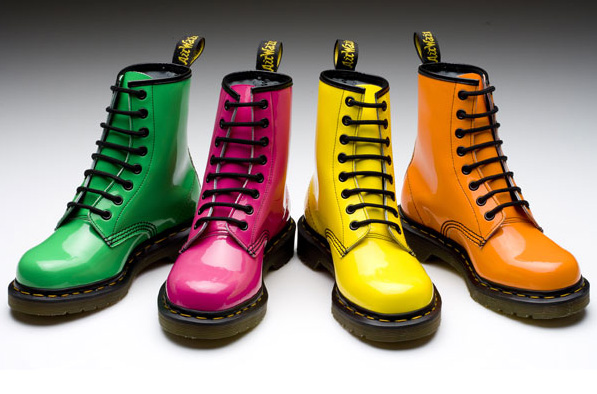
- Nimble foot ska
- Spred satin
- Arte bella
- Streets of gold
- A de pon dem
- Black sunday
- Don't want your loving
- Old fowl ska
- Enna bella
- Jezebel
- Always on a sunday
- Sugar bag
- Settle down
- Turn me on
- When the well runs dry
- Wheel and turn
- Oceans 11
- Over the river
- My heaven
- Set back (just cool)
- Du du wap
- Don cosmic
Labels: Music

In 1991, the band drew over 10,000 audiences at Japan's most prestigious venue, Nippon Budokan. Performing in major venues as well as small live houses, the band released 13 original albums and done over 1,500 live performances both in and out of Japan.
After the European release of the album "FULL-TENSION BEATERS" (2000.7,) in December 2000 the band toured 5 European countries and performed 11 lives in 12 days. Until the tour final countdown live in Berlin, they made every European skinheads hustle, inspiring the rock maniacs with their sound.
Starting from August 2001, the band releases 3 singles, all featuring guest vocalists. The recorded album "Stompin' On DOWN BEAT ALLEY" (2002.5) aced the Japanese chart in its first appearance. Then the band performed in numerous open air festivals, like Japan's massive summer event, Fuji Rock Festivals. In July 2002, having the featured vocalists as the show's guest, the group performed in front of 15,000 fans at another giant venue, Yokohama Arena full of 15,000 fans.
In November 2001, drummer Kin-Ichi Motegi joins the band after support playing for 2 years. This enabled the band to get hold of a free and powerful beat, and in March 2003, released the 11th original album "HIGH NUMBERS." Like the last record, this too was well acclaimed and entered the Japanese chart in second place. After touring Japan (27 cities/ 34 stages) in the album named tour, from June 2003, the band sets off for a 90 days Europe tour. This was an enriching experience for the band, as in 26 days they visited 8 countries and performed 18 stages, some of which were the stages in major massive festivals like Glastonbury Festival in England and Eurockeennes in France.
In June 2004, the band executes the first US tour (7 cities/ 10 stages.) The band performed in "Bonnaroo Music Festival" as the first foreign artist, and from late August, takes off for the third European Tour (11 cities/ 12 stages.) Mostly playing at live houses, and also performing in Netherland's "LOWLANDS FESTIVAL," the band returns to Japan getting solid feedbacks. Returning home, the band executes a live gig at Yoyogi Daiichi Taikukan on October 22nd drawing over 10,000 audiences, and tours Japan across 23 cities performing 38 stages.
On March 9, 2005, the band releases the album "ANSWER" which is full of tracks that have been polished throughout the numerous lives. So although an original album, it sounds as if it is TOKYO SKA PARADISE ORCHESTRA's greatest hits collection.
After releasing "ANSWER," the band goes on an auditorium tour in Japan performing 29 stages, and then flies to Europe. This Europe tour visiting 8 countries of 18 stages included first encounters such as Spain (Madrid and Barcelona both sold out) and Denmark (Roskilde Festival.) Returning home, after appearing in Fuji Rock Festival '05, the band performs in Summer Stage '05, a free concert in New York Central Park that have been continuing for over 25 years. The band played much in open air festivals, living the days like a pure and simple live band.
Starting from December 14th, 2005, the band again features guest vocalists and release 3 singles. On June 7th, the band releases the album "Wild Peace" and sets off on a tour from July. This "Wild Peace Tour," including the stages in Vietnam and the touring in Europe, counted to 70 lives in 5 months, and results as the largest and longest tour ever in the band's history. Having the featured vocalists as guests of the tour's final stage at Saitama Super Arena on January 14th, 2007, the band pulled up to 15,000 people. Their performance, developed through thousands of live stages, was greatly acclaimed by affiliates and audiences.
On March 21st, 2007, a best album was released which records the tracks after transferring to Avex. "SMILE," a documentary movie of the tour of latter 2006, was out on March 31st. On the other hand, an European tour starting late June is scheduled, and will appear in giant events like Montreux Jazz Festival and Eurockeennes.
- The Last Bandolero
- 5 Days of Tequila
- A Quick Drunkard
- Call from Rio
- Soul Growl
- (We Know It's) All or Nothing
- Skull Collector
- Howlin' Wolves
- Natty Parade
- Lovers' Walk
- The Movin' Dub (On the Whole Red Satellites)
- Film-Makers Bleed
- Theme from Enter the Dragon
- Down Beat Stomp
- Ska Me Crazy [Live]
Labels: Music


